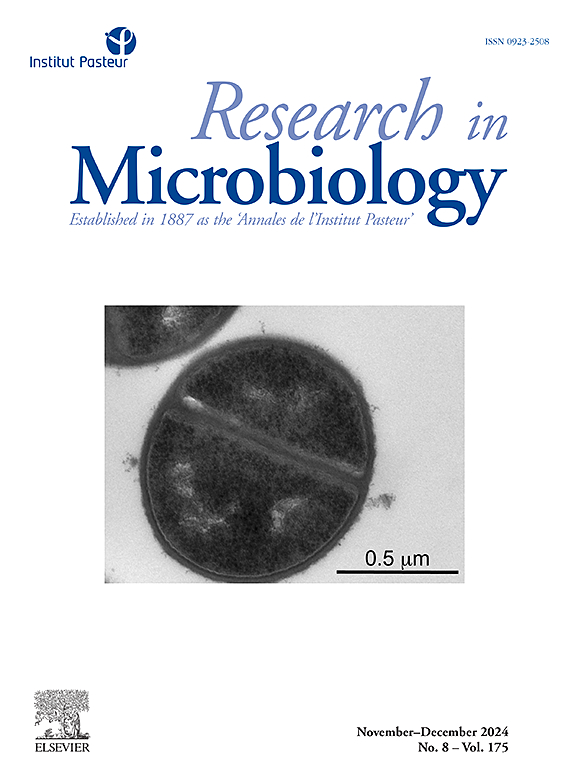Endopeptidase activities of Clostridium botulinum toxins in the development of this bacterium
IF 3.4
4区 生物学
Q3 MICROBIOLOGY
引用次数: 0
Abstract
By-products like CO₂ and organic acids, produced during Clostridium botulinum growth, appear to inhibit its development and reduce ATP production. A decrease in ATP production creates an imbalance in the ATP/GTP ratio. GTP activates CodY, which regulates BoNT expression. This toxin is released into the extracellular medium. Its light chains act as a specific endopeptidase, targeting SNARE proteins. The specific amino acids released enter the cells and are metabolized by the Stickland reaction, resulting in the synthesis of ATP. This ATP might then be used by histidine kinases to activate Spo0A, the main regulator initiating sporulation, through phosphorylation.
肉毒梭状芽孢杆菌毒素在该细菌发展过程中的内肽酶活性。
肉毒梭状芽孢杆菌生长过程中产生的副产品,如 CO₂和有机酸,似乎会抑制肉毒梭状芽孢杆菌的生长并减少 ATP 的产生。ATP 产量的减少会导致 ATP/GTP 比率失衡。GTP 可激活 CodY,从而调节 BoNT 的表达。这种毒素被释放到细胞外介质中。其轻链可作为特异性内肽酶,靶向 SNARE 蛋白质。释放出的特定氨基酸进入细胞,通过斯蒂克兰反应进行代谢,从而合成 ATP。组氨酸激酶可能会利用这种 ATP 通过磷酸化激活 Spo0A(孢子形成的主要调节因子)。
本文章由计算机程序翻译,如有差异,请以英文原文为准。
求助全文
约1分钟内获得全文
求助全文
来源期刊

Research in microbiology
生物-微生物学
CiteScore
4.10
自引率
3.80%
发文量
54
审稿时长
16 days
期刊介绍:
Research in Microbiology is the direct descendant of the original Pasteur periodical entitled Annales de l''Institut Pasteur, created in 1887 by Emile Duclaux under the patronage of Louis Pasteur. The Editorial Committee included Chamberland, Grancher, Nocard, Roux and Straus, and the first issue began with Louis Pasteur''s "Lettre sur la Rage" which clearly defines the spirit of the journal:"You have informed me, my dear Duclaux, that you intend to start a monthly collection of articles entitled "Annales de l''Institut Pasteur". You will be rendering a service that will be appreciated by the ever increasing number of young scientists who are attracted to microbiological studies. In your Annales, our laboratory research will of course occupy a central position, but the work from outside groups that you intend to publish will be a source of competitive stimulation for all of us."That first volume included 53 articles as well as critical reviews and book reviews. From that time on, the Annales appeared regularly every month, without interruption, even during the two world wars. Although the journal has undergone many changes over the past 100 years (in the title, the format, the language) reflecting the evolution in scientific publishing, it has consistently maintained the Pasteur tradition by publishing original reports on all aspects of microbiology.
 求助内容:
求助内容: 应助结果提醒方式:
应助结果提醒方式:


